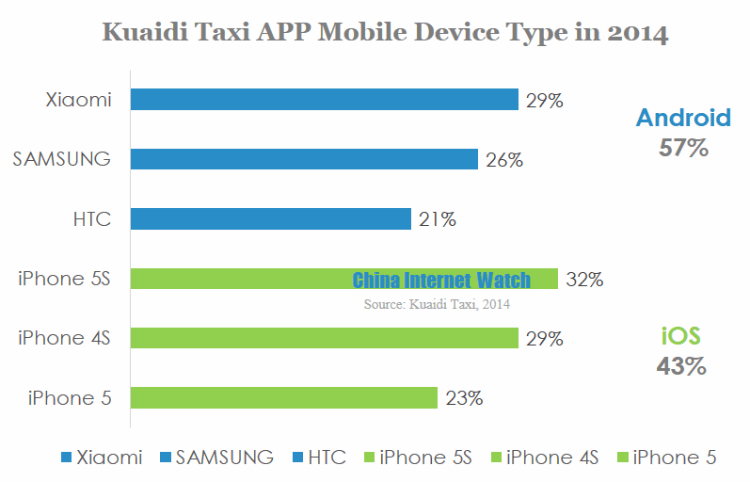
Right after Didi Taxi released its data on Wechat Official Account, Kuaidi announced its first quarter financial performance on March 2, 2014.
By March 31 in 2014, Kuaidi Taxi had covered 261 cities including all the provincial capitals, with 650% QoQ growth rate. The number of daily transaction reached 6.23 million, 20.7 times of one year ago.
Kuaidi monthly revenue reached 10 million yuan (USD 1.62 million) in Q1 2014, Kuaidi Taxi claimed they had built other business models besides advertising. They expected continuing future revenue growth. Specific business models remained as a secret at present.
The total amount of drivers’ account transaction (excluding Alipay QR-code payments) hit 4.73 billion yuan (USD 766.3 million). Each driver has an independent account, customer could pay with Alipay to the driver’s account. Taxi driver could withdraw the money anytime.

Among the mobile devices installed Kuaidi Taxi app, Xiaomi accounted for 29% in android devices, and iPhone 5S accounted for 32% in iOS devices.
Earlier, Kuaidi Taxi’s CEO Lv Chuanwei revealed that Kuaidi’s monthly expenditure was about 3 million yuan (USD 486,027) which consisted of human resource cost, bonus for taxi drivers and marketing cost.
Kuaidi’s COO Zhao Dong also said that taxi app could create billions of revenue every year for the industry by reducing taxi empty cruise time. He estimated the revenue of taxi industry would be at least 300 billion yuan (USD 48.63 billion) a year, and the taxi empty cruise time was around 30%. If Kuaidi could reduce the percentage by 5 point, it will bring 20 billion yuan (USD 3.24 billion) more revenue each year.
Lv Chuanwei also regarded taxi app as a big O2O opportunity. He thought taxi app was the only first step to win customers and build brand image, the second step would be intelligent route and trip planning and the final step was to set up integrated service calling platform.